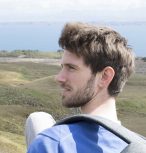DNA reveals the past and future of coral reefs
New DNA techniques are being used to understand how coral reacted to the end of the last ice age in order to better predict how they will cope with current changes to the climate. James Cook Univer

From 2005 to 2022, the main node of the ARC Centre of Excellence for Coral Reef Studies was headquartered at James Cook University in Townsville, Queensland (Australia)








Abstract: Coral colony morphology is typically described in terms of discrete categories, which are useful for the purposes of species identification, describing general ecological patterns, and inferring likely responses to external factors (e.g. cyclones, predation, competition). However, this descriptive approach is less robust when applied to more specific questions that require a quantitative and empirical approach. Here I will present preliminary morphological data obtained using a portable 3D laser scanner and coral skeleton specimens, and show how this data can provide the basis for working towards quantitative framework of coral morphology. The dataset comprises over one hundred 3D models split by five major growth forms (massive, digitate, arborescent, corymbose and table) across a range of colony sizes. We describe key differences between growth forms from two morphological traits; the stratification of colony surface area to volume ratios and its relationship to colony size, and a novel insight into how colony biomass is distributed through a vertical axis. In addition to presenting this data, I will also provide a general overview of the laser scanner and its operating principles, culminating in a live demonstration of how the scanner can rapidly generate 3D models from coral skeletons. This work highlights the potential in using quantitative morphological data to increase the vocabulary available to coral researchers when discussing coral morphology in a general context, as well as providing an empirical toolset for applying morphology to other research questions.
Bio: Kyle is a 2nd Year Joint-PhD student at the University of St Andrews in the UK and Macquarie University here in Australia, supervised by Dr Maria Dornelas and Dr Joshua Madin. His interests range from lab-based coral ecophysiology experiments during his undergraduate and master projects, to now moving toward broader questions pertaining to coral communities and the role functional traits may play in shaping them. His PhD encompasses a wide range of data and methods, from working with the CoralTraits.org database and coral community data, to field-based work, and his current work with 3D laser scanning technology. He is currently visiting the Museum of Tropical Queensland where he has been working with Tom Bridge and the museum’s extensive coral collection to generate 3D models of coral colonies. He sincerely hopes that these 3D models will not just be visually impressive, but will also hold the key to answering a range of questions relating to coral community dynamics (and some publications).
New DNA techniques are being used to understand how coral reacted to the end of the last ice age in order to better predict how they will cope with current changes to the climate. James Cook Univer
A new study on the effects of climate change in five tropical countries has found fisheries are in more trouble than agriculture, and poor people are in the most danger. Distinguished Profess
James Cook University researchers have found brightly coloured fish are becoming increasingly rare as coral declines, with the phenomenon likely to get worse in the future. Christopher Hemingson, a
Researchers working with stakeholders in the Great Barrier Reef region have come up with ideas on how groups responsible for looking after the reef can operate more effectively when the next bleaching
Abstract: As marine species adapt to climate change, their heat tolerance will likely be under strong selection. Individual variation in heat tolerance and its heritability underpin the potential fo
Abstract: The Reef Ecology Lab in KAUST’s Red Sea Research Center explores many aspects of movement ecology of marine organisms, ranging from adult migrations to intergenerational larval dispersal
Abstract: Macroalgal meadows are a prominent, yet often maligned component of the tropical seascape. Our work at Ningaloo reef in WA demonstrate that canopy forming macroalgae provide habitat for ad
Abstract: Sharks are generally perceived as strong and fearsome animals. With fossils dating back at least 420 million years, sharks are not only majestic top predators but they also outlived dinosa
Abstract: Connectivity plays a vital role in many ecosystems through its effects on fundamental ecological and evolutionary processes. Its consequences for populations and metapopulations have been
Abstract: Evolution of many eukaryotic organisms is affected by interactions with microbes. Microbial symbioses can ultimately reflect host’s diet, habitat range, and even body shape. However, how
Abstract: The past few years have seen unprecedented coral bleaching and mortality on the Great Barrier Reef (GBR) but the consequences of this on biodiversity are not yet known. This talk will expl